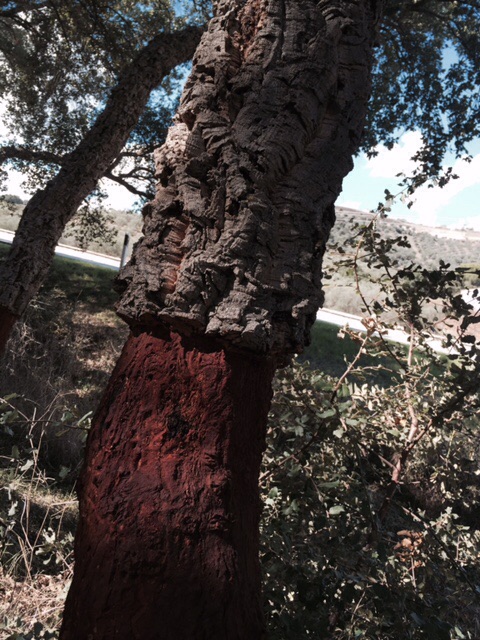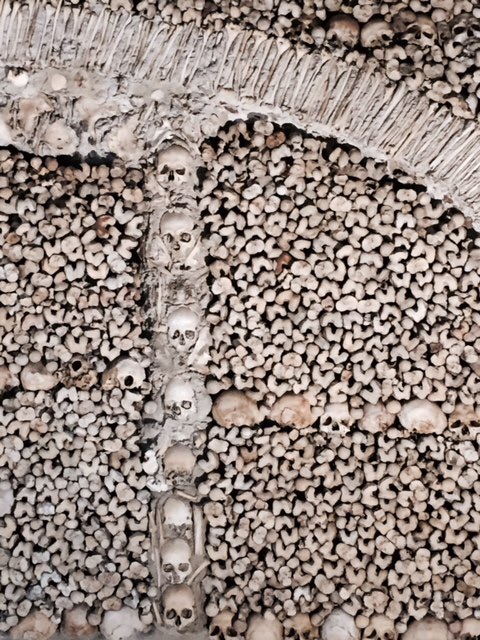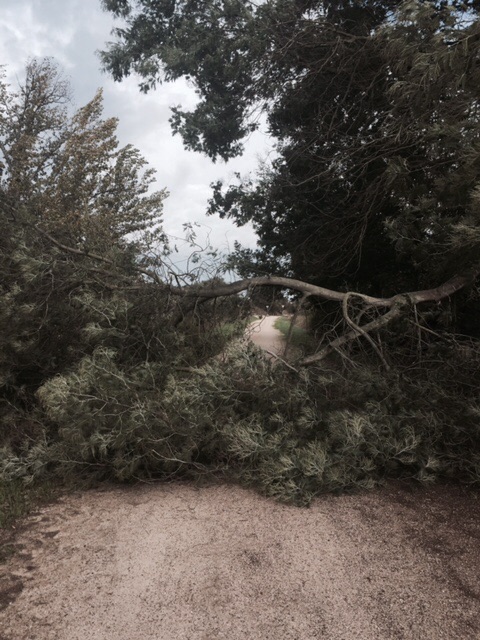In Estremoz, we booked a room in a Pousada which is most often a high end accommodation in Portugal. These were former palaces, convents, or other large estates which have been converted to hotels. The one we stayed in had been built by King Dom Dinis, for his wife, Queen Isabella, who later was canonized as a saint. The posada was furnished with many antiques and art pieces so just waking around was like being in a museum. It was quite nice but not our style.
Having a car gave us opportunities to visit smaller towns, one of which was Vila Viscosa where marble is mined and exported. Driving along you could see large open pit mines and huge piles of rocks which are the waste from the extraction process. In Vila Vicosa, we found a marble museum, the Museu Marmore, with an English speaking guide who gave us a wonderful tour through the large open room containing old mining equipment, photos, sculptures made from marble and geological explanations, some in English. Afterwards, we were allowed to roam the grounds of this former active marble quarry. We could see how the marble had been sectioned into huge blocks and then carved up into smaller ones or slabs. Now the pit was filled with groundwater.
The next day, we drove to Evoramonte, a town with an odd duck of a castle. Very few tourists come here because the castle was redone with concrete covering the original stone walls. A very thorough English explanation about castle design was on the ground floor but the other floors were completely empty.
After enjoying the view from the castle roof, we set out uncertain of where to go. I spied a road sign for the town of Azaruja which was on my list of places to visit. I had searched Trip Advisor for a cork processing facility and a forum directed me to Azaruja. We drove around with little luck and I resorted to my terrible Portuguese skills to ask a resident about where cork production was located. With my rudimentary understanding and sketchy TA forum advice, we headed to the “zona industriale” to search. Our third attempt was successful in locating Corticarte, and art and production facility on Rua A, no 7. Unfortunately the person who might be able to give us a tour was at lunch but we simply nosed around the showroom which was stuffed with products made with cork. In the attached warehouse, we found a corner where there were tools and a demonstration center of how cork is processed.
We suspect other tourists are interested in learning about cork production as Portugal supplies half of the world’s cork, Spain, the other half. There may be a cork factory closer to Lisbon, but in the Alentejo, cork trees are everywhere which piques one’s interest. You can see the bark stripped off the tree and a number painted on it which indicates the harvest order. It takes 9 years for a Quecus Suber to regenerate enough bark to be stripped again. Meanwhile, in a symbiotic relationship, the cork forests provide habitat for birds and other fauna. Also, the acorns from the cork tree are a large part of the black pig’s diet which gives the pork a special flavor and is a part of the Alentejo cuisine.
The next day, we drove to Evora to return our rental car. There are a fair number of tourists, particularly Americns, which we haven’t run into elsewhere. Evora boasts Roman temple remains, a medieval aqueduct, and a chapel of bones among the usual cathedral and walled parts of the historic center. That, along with the only place in the Alentejo mentioned in Rick Steves’ guide and it’s proximity to Lisbon must be why they flock here.
Since arriving, we’ve walked along the aqueduct, visited the chapel of bones and two other museums, biked an Ecopista toward Arriolas, and attended a Spanish flamenco dance and concert. Most unusual attraction is the Capela Dos Ossos or chapel of bones created by three monks from the bones of those buried in churchyards. The inscription above the entrance reads “We bones in here wait for yours to join us” and is meant to encourage visitor reflection about the transience of what is important in life.
Yesterday, we woke up early to bike the trail from Evora to Arrialos as a thunder storm was predicted by noon. The first part of the Ecopista was paved, but when the town limit was reached, the pavement stopped and continued as a hard packed trail so we rode on enjoying a wonderful tailwind. Just short of Arriolas, we turned around mindful of the time it would take us to get back before the storm. We faced crosswinds and serious gusts which at one point almost blew us off the trail making progress a challenge. Since this Ecopista was an old railroad grade, we had some protection from the crosswind by the land which the trail was carved through. However, about halfway back to Evora, we came across a Jacaranda tree which had been toppled by the wind since we biked past it. It provided nervous energy to get back to Evora before the storm let loose.
Last night, we attended a Flamenco dance and singing concert nearby. The dance was a school company but the singing was by a well known Spanish artist who has been nominated for a Latin Grammy award. Our Portugal adventure concludes in the next 2 days as we head to Lisbon to fly home to Seattle.









